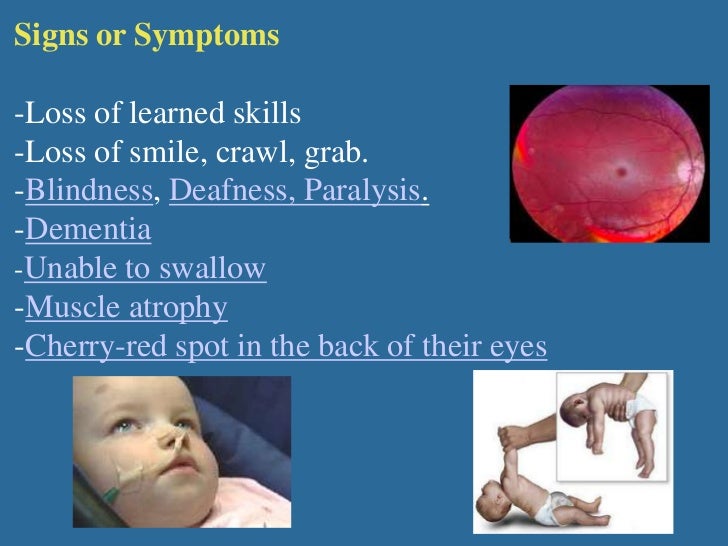Tay-Sachs disease affects the central nervous system and is hereditary, autosomal recessive (more common in descendants of Hebrews). It receives the name of those who described the symptoms and related them to the disease towards the end of the 19th century, Warren Tay and Bernard Sachs.
 |
| Bernard Sachs Warren Tay |
The people that suffer from the disease are unable to produce a lysosomal enzyme called hexosaminidase-A that is involved in the degradation of gangliosides. Without the Hex-A, gangliosides accumulate in brain cells and that cause a deterioration of the nervous system. It is included within the lipid storage diseases.
Symptoms
Babies appear normal in their births and develop well until six months, when they gradually lose their physical and mental abilities and most of them don’t live more that five years. Among the most common symptoms are hand tremor, speech defects, muscle weakness and loss of balance, as well as deafness, loss of visual ability, even reaching blindness, epileptic seizures, growth retardation, irritability, apathy and delays in mental and social abilities.
Treatment
Actuals there aren’t effective treatments for TSD, but carriers can be detected to reduce this disease and there are ways of making life more comfortable for those living with the disease such as massage therapy.
Diagnose
The carriers can be identified by tests of Hex-A activity or by DNA tests that detect specific gene mutations. Also are often diagnosed by a characteristic “red dot” found on the retina of the eye.
Future
Hex-A enzyme substitution therapies are currently being investigated.
Webpage:






